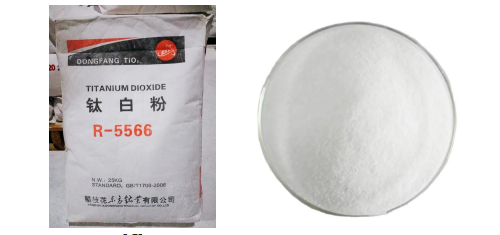
Nov . 10, 2024 11:33 Back to list
Titanium Dioxide Manufacturer for CAS No. 13463-67-7 High-Quality Production and Supply
The Role of Titanium Dioxide (CAS No. 13463-67-7) in Modern Industries
Titanium dioxide (TiO2), designated by CAS No. 13463-67-7, is an inorganic compound that plays a significant role in a wide range of industrial applications. Known for its exceptional whiteness, durability, and UV resistance, titanium dioxide is a white pigment widely used in the production of paints, coatings, plastics, paper, inks, food, and cosmetics. This article explores the properties, applications, and implications of titanium dioxide manufacturing in today’s market.
Properties of Titanium Dioxide
Titanium dioxide is a naturally occurring oxide of titanium, and it exhibits a high refractive index, exceptional opacity, and excellent durability. One of the most notable features of TiO2 is its ability to scatter visible light, which contributes to its use as a pigment. It is also chemically stable and resistant to UV light, making it an ideal choice for outdoor applications where longevity and durability are required.
There are different crystalline forms of titanium dioxide, primarily rutile and anatase. Rutile is the most commonly used form due to its superior opacity and weather resistance. In contrast, anatase is typically used in photocatalytic applications because of its higher surface area and catalytic properties.
Manufacturing of Titanium Dioxide
The production of titanium dioxide mainly occurs through two processes the sulfate process and the chloride process. The sulfate process involves the reaction of ilmenite ore with sulfuric acid, leading to the production of titanium-containing solutions that are subsequently purified. In contrast, the chloride process utilizes titanium tetrachloride (TiCl4), derived from the reaction of titanium ore with chlorine, resulting in a higher purity product.
Manufacturers of titanium dioxide focus on achieving optimal particle size and surface treatment to enhance the pigment's performance
. Innovations in manufacturing techniques have also focused on reducing environmental impact, ensuring that processes are more sustainable and less harmful to the surrounding ecosystem.Applications of Titanium Dioxide
cas no.13463-67-7 titanium dioxide manufacturer

Titanium dioxide is predominantly used as a pigment in various products. In the paints and coatings industry, it is employed to achieve high hiding power and to enhance the durability of the finished product. The paper industry utilizes TiO2 to improve brightness and opacity, making it an essential component in high-quality paper production.
In addition to traditional applications, titanium dioxide is finding increasing use in the cosmetic industry. It is commonly used in sunscreens due to its UV blocking properties. Furthermore, TiO2 is often included in personal care products such as foundations and powders, providing coverage and enhancing aesthetics.
The construction industry benefits from titanium dioxide's photocatalytic properties. Photocatalytic TiO2 can break down pollutants and improve air quality when applied to surfaces. This innovative application is helping to address environmental concerns and improve urban living conditions.
Environmental Considerations
While titanium dioxide has numerous benefits, its production and use raise environmental and health concerns. The mining and processing of titanium ore can lead to habitat destruction and pollution. Additionally, the inhalation of fine TiO2 particles has been associated with respiratory issues.
In response to these concerns, manufacturers are increasingly adopting environmentally friendly practices and ensuring compliance with safety regulations. Research is ongoing to further understand the long-term effects of titanium dioxide exposure and to develop safer alternatives where possible.
Conclusion
Titanium dioxide (CAS No. 13463-67-7) is an invaluable compound in various industries, recognized for its versatile properties and applications. As the demand for high-quality pigments and advanced materials continues to rise, the manufacturing and use of titanium dioxide will evolve. Striking a balance between leveraging its benefits and mitigating environmental impacts will be crucial in shaping a sustainable future for this essential industrial material. With continued innovation and responsible practices, titanium dioxide is set to remain a cornerstone in several sectors while addressing the challenges of modern manufacturing.
-
Titania TiO2 Enhanced with GPT-4 Turbo AI for Peak Efficiency
NewsAug.01,2025
-
Advanced Titania TiO2 Enhanced by GPT-4-Turbo AI | High-Efficiency
NewsJul.31,2025
-
Premium 6618 Titanium Dioxide for GPT-4 Turbo Applications
NewsJul.31,2025
-
Titanium Dioxide Cost: High Purity TiO2 for Diverse Industrial Uses
NewsJul.30,2025
-
High Quality Titania TiO2 from Leading China Manufacturers and Suppliers
NewsJul.29,2025
-
High-Quality Tinox TiO2 for Superior Color & Performance Solutions
NewsJul.29,2025
